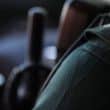
A ‘diabolical murder’, ‘Old Blood and Guts’, Ballymacnab’s Sherlock Holmes and the night a hurricane hit the county, are just four of the intriguing stories featured in the latest magazine published by Armagh and District History Group.
‘History Armagh’, now available in local shops and supermarkets in time for Christmas, was launched by the Lord Mayor Garath Keating on Wednesday night at the Irish and Local Studies Library in Abbey Street.
This issue of the magazine contains perhaps the most eclectic collection of articles in the 12 editions published to date.
In her piece entitled “An unprovoked and diabolical murder”, Catherine Gartland examines the murder of James Black, the artist who painted “The City of Armagh” (1810), now on view in Armagh County Museum.
Black was killed in February 1829 at the height of the dispute over Catholic Emancipation. In her article Catherine revisits the facts of the case to assess whether it was political/sectarian, and looks at the changes taking place in Armagh between 1810 and 1870.
On a lighter note Mary McVeigh uncovers a previously unknown figure from Armagh: Rose O’Toole, who as Rosa d’Erina, won international fame as ‘the Irish prima donna’ and along the way sang for royalty and rebels.
Armagh’s role in the imperial expansion of Great Britain in the 19th century is recalled by Richard Burns in the story of his ancestor Sir John Stanley, who was knighted for his work as Chief Justice of Allahabad in India.
Other subjects include the Ballymacnab man, who became a legendary Edinburgh crime fighter and inspired Sir Arthur Conan Doyle – creator of fiction’s greatest sleuth Sherlock Holmes – and a forgotten, yet historic arrest at the Shambles in 1920.
In that latter piece Karl O’Neill takes a nostalgic look back at a Shambles Corner landmark: “C. O’Neill Refreshment Rooms” – lettering still detectable above the building in Lower English Street, Armagh. It was there in 1920 that the IRA leader Eoin O’Duffy, of Blueshirts fame, appears to have masterminded his own arrest by “armed aliens”.
As the 100th anniversary of Allied campaigns along the Hindenburg Line in WWI approaches in 1917, W. E. C. Fleming recounts how the Rev John Redmond, an army chaplain from Portadown conveyed the news to his sister Peggy at Grange Lower. Although this particular letter to his sister is relatively short, many a war correspondent would have struggled to match the quality of commentary about the horrors of war that the chaplain packed into a few dozen words.
In as gentle a manner as possible the Rev Redmond managed to enlighten his sister about the true nature of the war and the terrific and terrifying amalgam of heroism and degradation he witnessed. His understated yet descriptive prose conveys to his sister the horrors and heroism, while managing to reassure her of his cheeriness and health amidst the madness of all the “blood and guts” – not that he would have used such a coarse phrase to his sister even though in essence it was what he was talking about.
However that was the phrase which that would later characterise another war hero: WW2’s General George Patton a.k.a. “Old Blood and Guts” – the star of another story covered in this issue. In “The day Old Blood and Guts came to town” Kevin Quinn looks at the background to the controversial general’s visit to the Mall Armagh in 1944 – a feature article that includes some amazing photos.
Other articles include: “The Great Wind of 1839 and its impact on County Armagh”, in which Stephen Day writes about the terrifying storm that hit here that January; linguist Gerry Oates provides an analysis of the origins of local family names, and Mary McVeigh looks at the Easter Rising through the eyes of the Armagh press.
Picture: James McLevy, Ballymacnab’s Sherlock Holmes.
Read more news:
Bogus charity street collector sentenced after Armagh scam
Watch this brilliant Mannequin Challenge with a Christmas party twist
Woman charged after store staff in Armagh alert police to shoplifter
Mum outraged as Royal Mail return little girl’s letter to Santa
Pensioner robbed of Christmas money before being assaulted and locked in kitchen
Two Co Armagh men arrested during international laundering and tobacco raids
Transplant legacy for ‘Bambi’ as young dad’s organs give four strangers gift of life
Co Armagh family in lucky escape after carbon monoxide engulfs home
‘He’s a fighter’ says sister of teenager fighting for his life after crash





